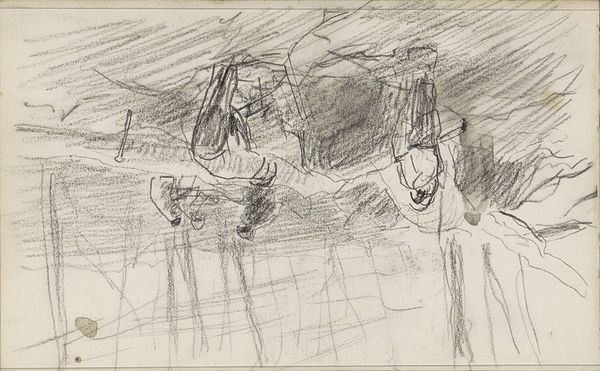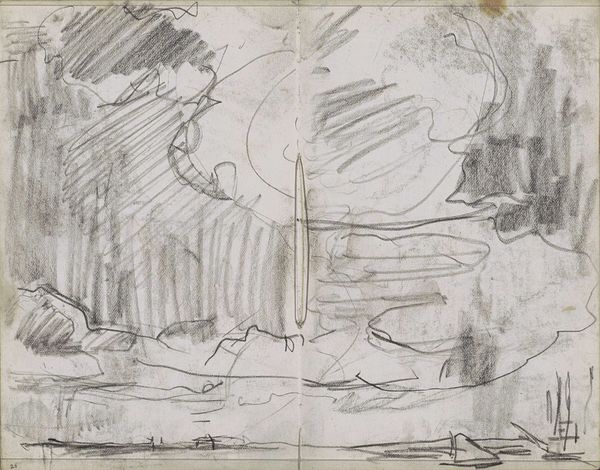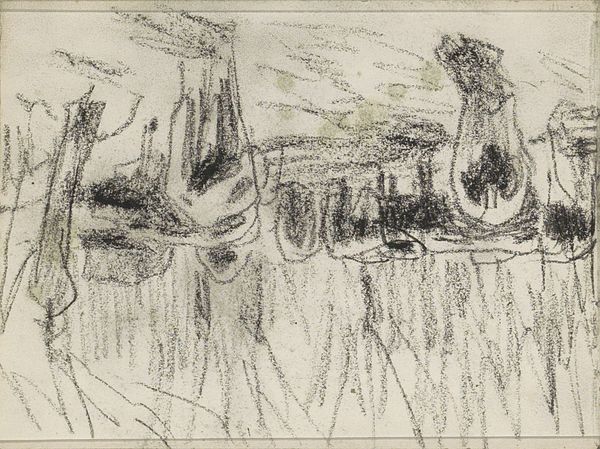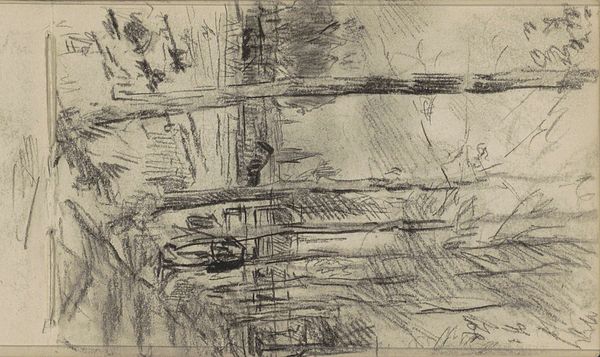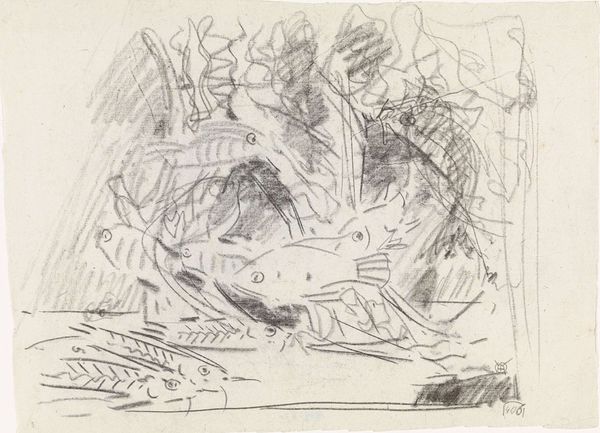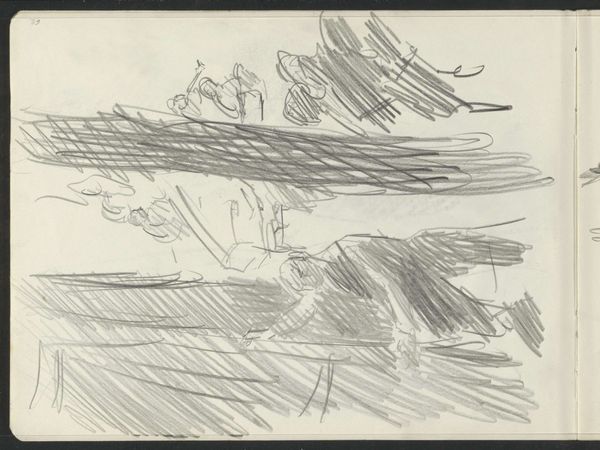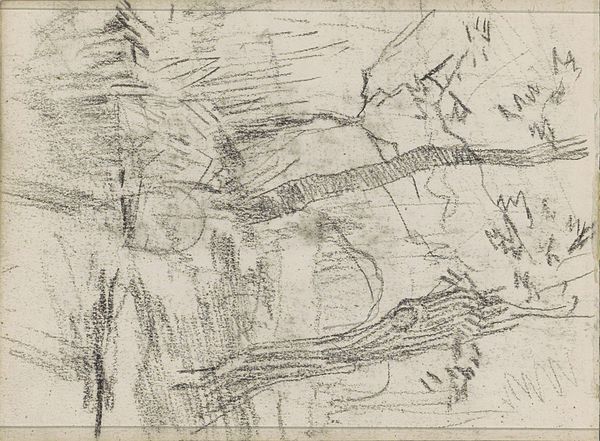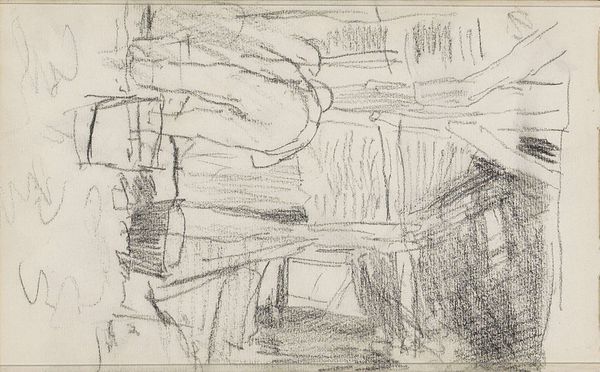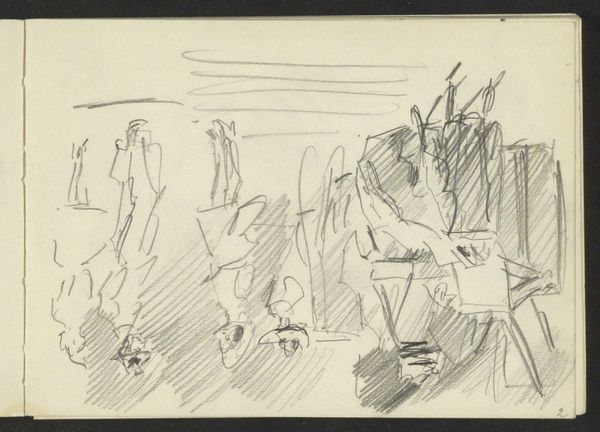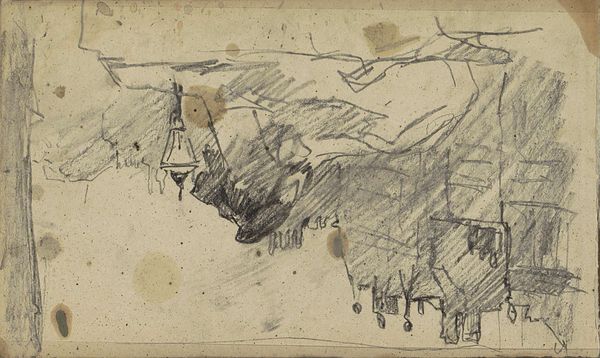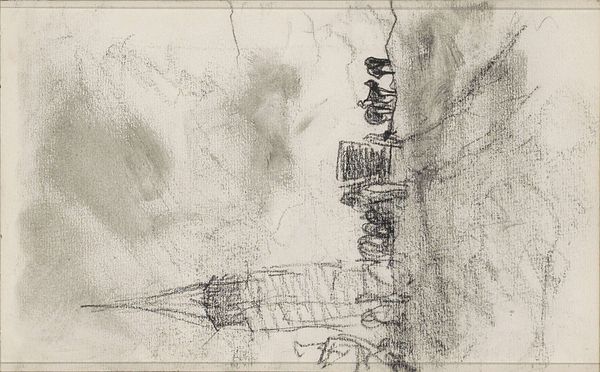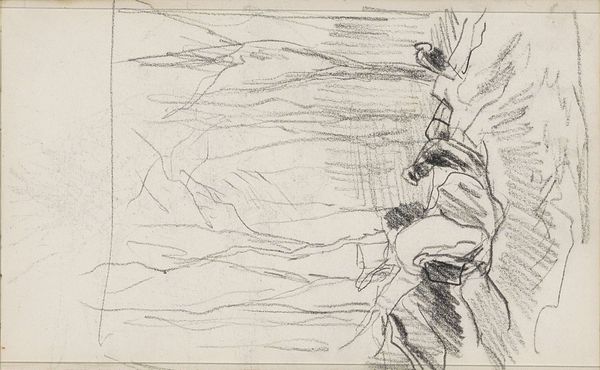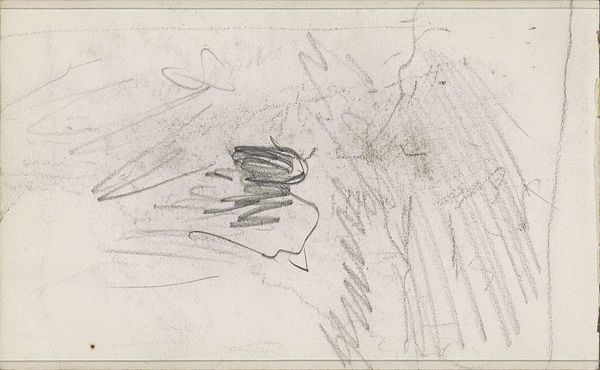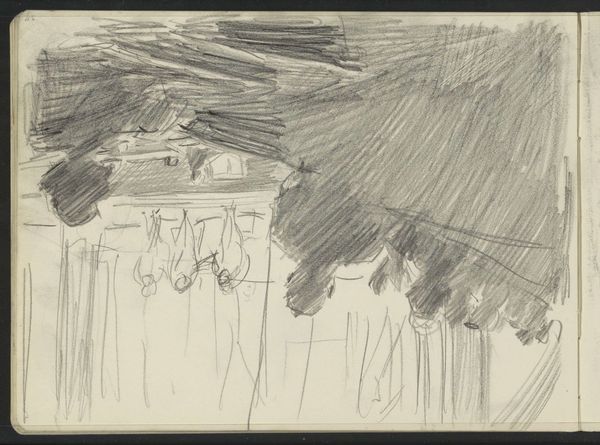
drawing, paper, pencil
#
drawing
#
pen sketch
#
figuration
#
paper
#
child
#
pencil
#
genre-painting
Copyright: Rijks Museum: Open Domain
Curator: Looking at this delicate drawing by Johan Antonie de Jonge, titled "Figuren in zee", or "Figures at Sea," created sometime between 1881 and 1927, what captures your attention first? Editor: Immediately, it feels like catching a fleeting memory, a moment almost lost to time. There's a dreamy, wistful quality to the soft pencil and pen lines. I sense a kind of innocent intimacy, observing figures casually enjoying the beach. Curator: De Jonge’s "Figuren in zee" offers insight into the popular theme of genre painting during the late 19th and early 20th centuries: it invites viewers to observe a relaxed coastal scene from that period. These beachside recreations provided rich social material and evolved in tandem with broader developments in leisure and tourism. Editor: That's a sharp observation. For me, the figures, lightly sketched, aren't particularly posed. They have a certain everyday quality, as if they weren't conscious of being observed. I appreciate the artist’s ability to capture that kind of casual human behavior. It almost feels like eavesdropping on their world. Curator: Indeed. It captures a transient social space—the beach. It allows one to consider how the rise of the bourgeoisie influenced where people went, what they did, and how this eventually shaped visual culture at the time. Editor: It also leaves space for my imagination to roam free, pondering who they might have been and what conversations may have unfolded. The limited palette invites a dreamlike narrative, and there's an enigmatic presence in this choice. Curator: I agree. As an artist you connect with its aesthetic value, while from a historical vantage point, the art invites one to think about larger contexts such as society and changing cultural themes and settings of the time. Thank you for sharing your personal experience! Editor: Thank you. This conversation helped me see beyond its charm. Now I'm thinking about what I create in response, and it seems those faint lines are calling me!
Comments
No comments
Be the first to comment and join the conversation on the ultimate creative platform.
